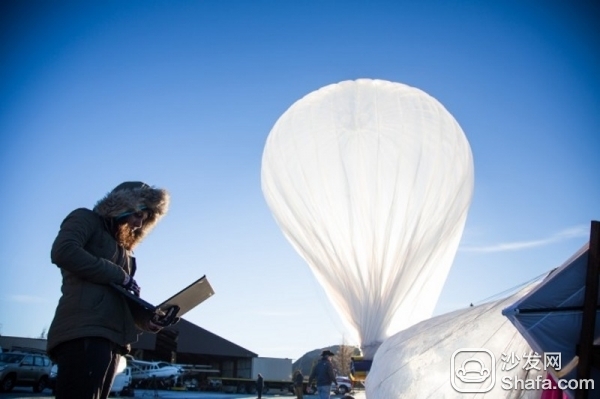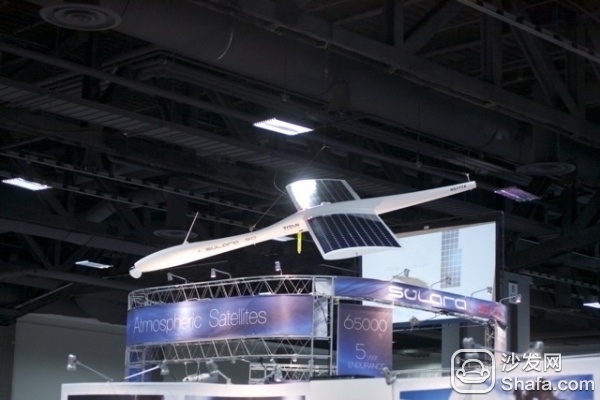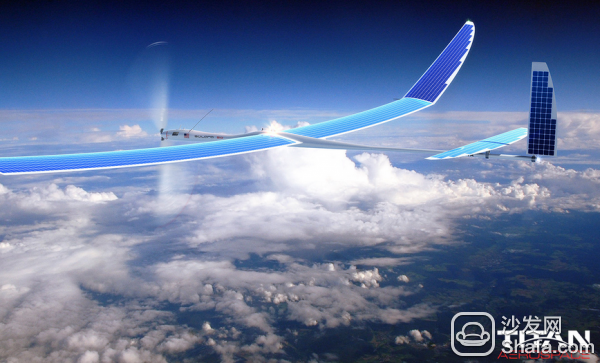Project Loon, Project Titan, and Project Blank aren't even clear? It does not matter, Lei Feng network for your science of these three Google brewing long-standing black technology.
1, Project Loon
In June 2013, at the joint press conference with the New Zealand government, Google announced the Project Loon project - launching a balloon with wireless network equipment into the sky as a floating base station, with 2/3 of the world’s people 3G speed network access, and ensure that the cost of Internet access is affordable.

Looking back at the project's development timeline, the Project Loon project was already born in 2011 in the brains of Google scientists. In the past, Rich DeVaul DeVaul, a former employee of Apple Computer and Google X, proposed that Google can launch and control hot air balloons through its powerful data computing capabilities, adjust its flight altitude and direction, and provide network access services for remote areas.
Since August 2011, DeVaul has been conducting hot air balloon test experiments in Central Valley, California: equipped with hot-air balloons equipped with computers and antennas running Linux systems, and then launched a hand-made hot air balloon; Colleagues drove up to the ground road and caught the signal before the hot air balloon landed or drifted far away. Although there have been many failures during the period, DeVaul himself has always insisted that the Project Loon project has great potential.
Hot Air Balloon Officially Joins Google X
So in early 2012, Project Loon officially became an official program of Google X. The project team brought together many “Googler elites†and also cooperated with NASA's weather balloon company.
On June 15, 2013, 30 balloons from the Project Loon project were launched on the South Island of New Zealand, and 50 local residents participated in the testing of the network.

According to official data, these hot air balloons are 12 meters high and 15 meters in diameter after full expansion. They can float to high altitudes above 20km. They use solar power during the day and battery life at night. Signals are transmitted from balloons to ground antennas. Transmitted to the wireless device via the ground antenna. The R&D personnel stated that the material used in the balloon is very thin and lightweight with a thickness of only 3 mils, and the use of over-pressure sealing technology ensures that the balloon is not damaged during the ascent, which takes longer than normal balloons to stay in the air. â€
How does a fragile hot-air balloon ensure stable network coverage?
There are still many professionals who have expressed doubts about the first trial run of the project: Unstable hot air balloons are vulnerable to weather, wind, etc. How can a continuously flowing mesh network provide stable Internet coverage?

The world-famous balloon driver, Per Lindstrand, aerospace engineer from Sweden, said, “I particularly question Google’s description of the balloon – the balloon material is durable enough to float in the air for 100 days, and is almost the world’s most advanced NASA balloon durable At twice the degree. Even so, the NASA balloon floats very rarely for three weeks. From a scientific point of view, this plan is nothing more than a paper, it is absolutely impossible to achieve."
To this end, the members of the Project Loon project team then scientifically interpreted the technology that looks "Arabic", "These 'smart hot air balloons' will be kept apart by a programming system that automatically Adjust yourself to maintain a good "form" so as to provide a stable, continuous connection to ground receivers."
The following is an official video provided by Google to demonstrate how the hot air balloon group makes adjustments to collective actions in response to changes in the environment to avoid network coverage.
[flash]http://player.youku.com/player.php/sid/XNjAzMzU1MjI0.html/v.swf[/flash]
One big breakthrough after one year: 5 minutes full of gas 1 day launch 20
On November 21, 2014, Google again announced the latest progress of the Project Loon project. This time, Google and Australia's largest telecommunications company, Australia Telecom, jointly conducted a test of the hot air balloon network. Compared with last year's data, the number of days that hot air balloons used in the Project Loon project can stay in the air is ten times that of last year. Most balloons can stay in the stratosphere for more than 100 days, some of which can even stay longer than 130 days. In addition, the total floatation of these balloons in the air has reached as much as 3 million kilometers.
The team said that the hot air balloon's driving and maneuvering system has been significantly optimized, and the hot air balloon can be closer and more precise to the target location. Specifically, by predicting and guiding the wind direction of the stratosphere, for a hot air balloon that needs to rise to 9,000 kilometers above the ground, the error to reach the target location has been controlled within 1.5 kilometers. It is now just 5 minutes to put a hot air balloon ready for launch and the team can now launch 20 hot air balloons a day.
"Long Lasting" Secret: The Technology of Condoms
If it is the first question that Project Loon faces if the hot air balloon can go smoothly, then how can one make the “breakable, vulnerable†hot air balloon as long as it can stay longer in the sky? difficult. For example, a hole with a diameter of 2 mm, which is hardly noticeable to the naked eye, has a huge impact on the use time of hot air balloons due to air leakage problems, which will reduce the life span of a balloon for several weeks.

Internal structure chart of Project Loon
To this end, Mahesh Krishnaswamy, the chief director of the Project Loon project, said that the team used the liquid and electrostatic tests in the condom production process to solve the balloon leak problem. They chose to use a new material and structure, which effectively increased the life of the hot air balloon.
Recent Developments in Project Loon
At the end of last year, Google stated that the Project Loon project will initially sell 4G LTE access services in 2016. Its potential customers will be local residents in Oceania, South America, and remote areas in South Africa.
The news that Pichai himself revealed at the MEC conference said that experimental ideas that began four years ago have now made tremendous progress. The flying time of hot air balloons has increased from the first few days of the beginning to the current nearly six months. This is more than double the original three-month commercial target. One of the longest floating balloons traveled in the stratosphere for 187 days. It ran for 9 rounds around the earth and straddled more than 10 countries on four continents.
On March 3rd, just one day after the development of Pichai's own hot air balloon project, Zuckerberg made public speeches in his speech at the MWC conference (the theme is to help remote countries and regions realize the importance of Internet access). Willing to work with Google on the Project Loon project.
2, Project Titan
Facebook was loved by Google
In April 2014, Google acquired Titan Aerospace, a drone manufacturer, which was not disclosed.
The fact that needs to be explained is that Facebook had already sold olive branches to the company for several months at a high price of 60 million US dollars, and the two companies' "browstaking" acquisition talks continued for several weeks. This has also caused many Silicon Valley venture capitalists to feel that the lavish Facebook is obviously a must-have, and also hopes to use drone technology to counter Google’s hot-air balloon program.

Google half-way into the "drone little fresh meat," Titan company frequently show, saying that regardless of the amount of Facebook offer are willing to pay a higher price, so Google has taken away from the face of the mouth of Titan. The unfortunately defeated Faccebook spent $20 million to acquire Ascenta, the British solar unmanned aerial vehicle company with the same product positioning. Perhaps it was also a frustrating move to find the "spare tire".
The advantages and disadvantages of drones and hot air balloons
Kurt Barnhart, director of the Center for Applied Aviation Research at Kansas State University, once stated that although hot air balloons provide a wider range of network access than solar drones, they are larger and more difficult to control and are vulnerable to the weather. "In view of this, for the purpose of Google, which aims to set up high-altitude Internet, the solar drone will be the best choice for the hot air balloon project. It not only has no operational problems, but also has a lower cost and environmental protection in terms of energy supply." Project Loon and Titan are complementary in terms of functionality, and they will all be wireless network towers that fly over people.

Founded in 2012, Titan Aerospace employs only 20 people. The first product, the Solara 50 drone, has already provided network access to residents from the air to the ground, and can also complete the shooting of earth images, border patrols, and monitoring. Ozone changes and other tasks. A year later, the second-generation drone Solara 60 was launched. The most obvious improvement was the effective use of solar energy. According to reports, Solara 60 can stay at high altitude for a period of five years after being once lifted, and rely on solar energy to gain power. It can provide up to 1 GB of network access service per second.
So, Google and Faccebook are not just a single product of Titan, but an increasingly mature technology of solar unmanned aircraft. This is undoubtedly the best choice for providing network access services and serving as a carrier for communication in remote areas.
The latest developments in the Titan project
After the acquisition, Titan, which has remained in independent operations in New Mexico, worked closely with Google’s two other projects, Project Loon, and Makani, a wind power project, to jointly develop technologies such as new materials and wind direction prediction algorithms for UAVs.

In September 2014, Google disclosed the progress of the project: The test flight Titan UAV has been approved by the FCC, and plans to test the drone network for 910 MHz to 927 MHz and the 2.4 GHz band for up to six months. , and this is undoubtedly a powerful test of the network signal. However, in the six months since then, the Project Titan project has not moved a bit.
Until the day before yesterday, at the 2015MWC conference, Sundar Pichai publicly stated that today's Project Titan project is developing lightweight solar drones, and the progress is still in the stage where Project Loon was located two years ago and will be this year. At some point, the first formal test flight took place.
If the project is successful, the Titan drone will be used to provide remote network connectivity, can capture real-time, high-precision satellite images of the Earth, carry other atmospheric sensors, and support voice and data services at a transmission speed of 1GB per second, much faster than The current speed of most developed countries. Specifically, the Titan drone can be used to help monitor natural disasters such as oil spills or deforestation, or, more specifically, drones can provide stability for the disaster area at the time of the disaster. Effective network hotspots.
The weakness of solar drones
Although from Google's point of view, Project Titan's prospects are excellent, but the industry believes that the project still has many technical problems that need to be overcome. For example, solar drones have limited payload, they cannot obtain solar energy at night, and they consume the Internet signals. A lot of energy and so on.
3, Project Blank
The mysterious Project Blank project was launched in 2014. The main service population is residents of remote areas in Africa. Google disclosed little information about this plan. At this MWC conference only, Pichai publicly stated that the company will build fiber optic networks in Africa this year, and will cooperate with local operators to provide 4G services to promote Project Blank. project. At present, the project is in a confidential phase. With regard to the project Blank de news, Lei Fengnet will continue to track and report.
In addition to the above three projects, Google has begun to gradually deploy its own global network services. At the MWC conference, Sandar Pichchai also announced that he will enter the field of mobile virtual network operators. As a newcomer to the industry, Google does not plan to build a large-scale infrastructure. Instead, it considers cooperation with network operators. However, in connection with Google's already launched small-scale fiber (Google Fiber) and Project Loon, Project Titan, and Project Blank projects, Google has begun to take shape in order to solve the problem of Internet access worldwide. In the near future, we may all be able to use the Google network to quickly access the Internet.
Recommended installation sofa butler, download address: http://app.shafa.com/

Hot Apps Recommended: HDP VST All-in-one Fast-viewing film Dragons Live Karaoke King TV Thumb Playing ZAKER